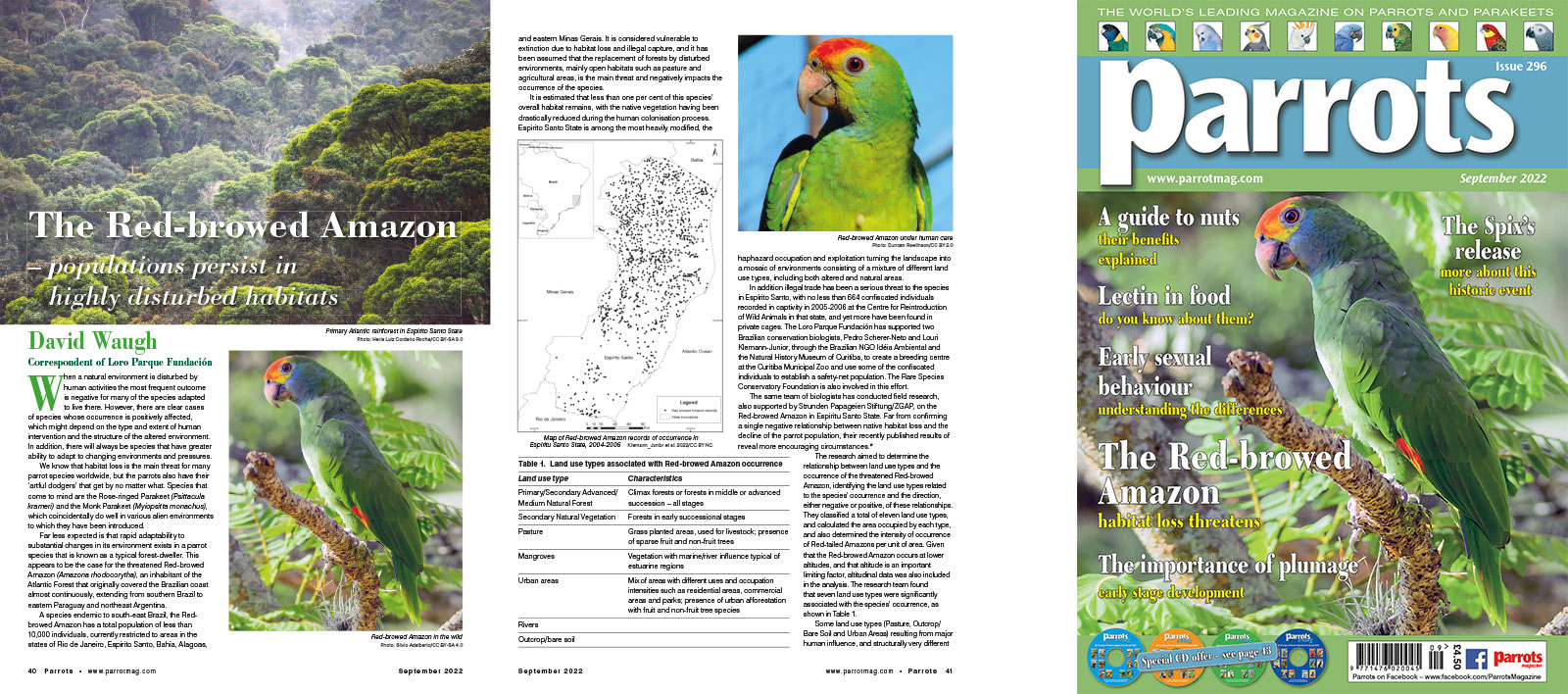
By David Waugh, Correspondent of Loro Parque Fundación
When a natural environment is disturbed by human activities the most frequent outcome is negative for many of the species adapted to live there. However, there are clear cases of species whose occurrence is positively affected, which might depend on the type and extent of human intervention and the structure of the altered environment. In addition, there will always be species that have greater ability to adapt to changing environments and pressures.
We know that habitat loss is the main threat for many parrot species worldwide, but the parrots also have their ‘artful dodgers’ that get by no matter what. Species that come to mind are the Rose-ringed Parakeet (Psittacula krameri) and the Monk Parakeet (Myiopsitta monachus), which coincidentally do well in various alien environments to which they have been introduced.
Far less expected is that rapid adaptability to substantial changes in its environment exists in a parrot species that is known as a typical forest-dweller. This appears to be the case for the threatened Red-browed Amazon (Amazona rhodocorytha), an inhabitant of the Atlantic Forest that originally covered the Brazilian coast almost continuously, extending from southern Brazil to eastern Paraguay and northeast Argentina.








Parrot Chat
Buyers Guides
Breeding articles